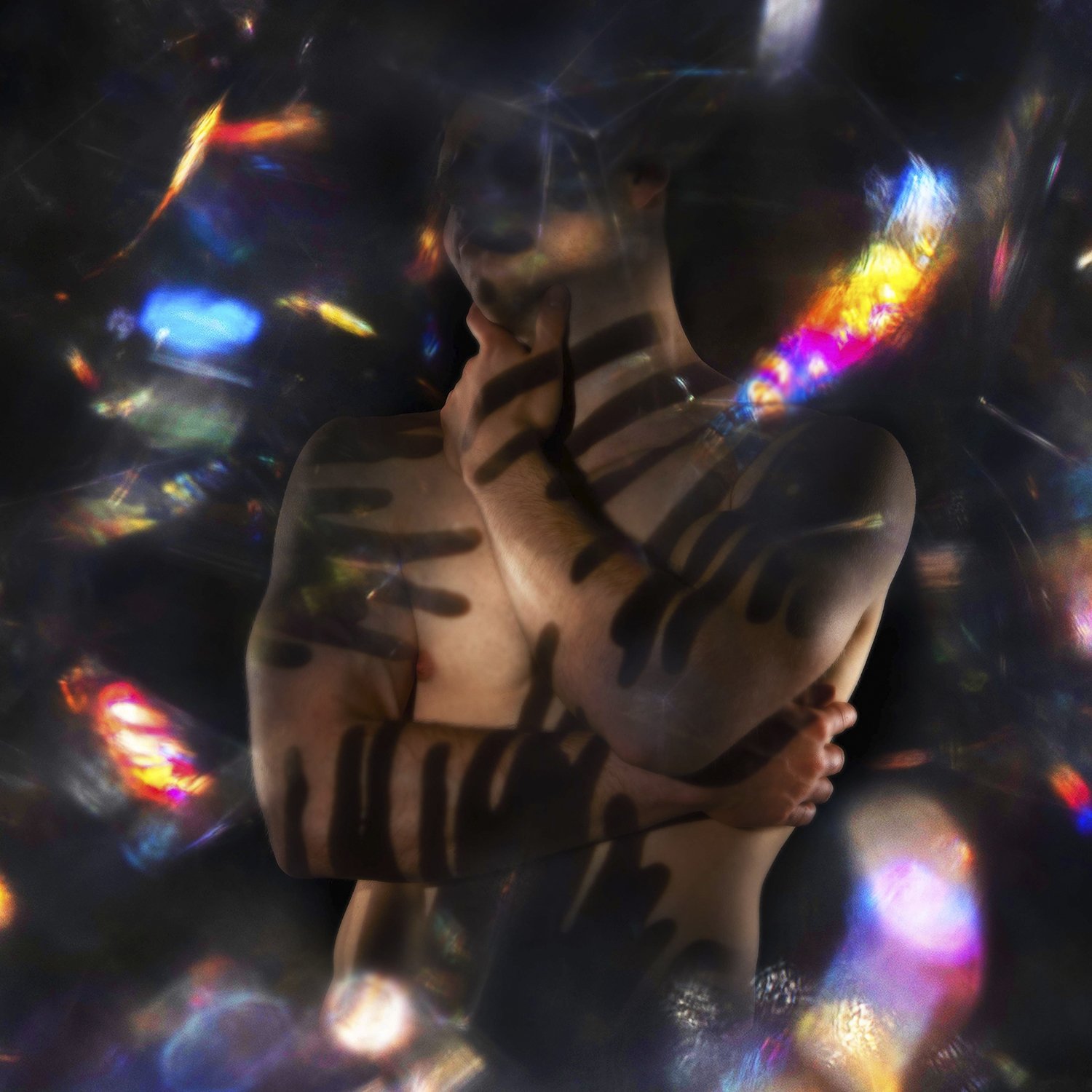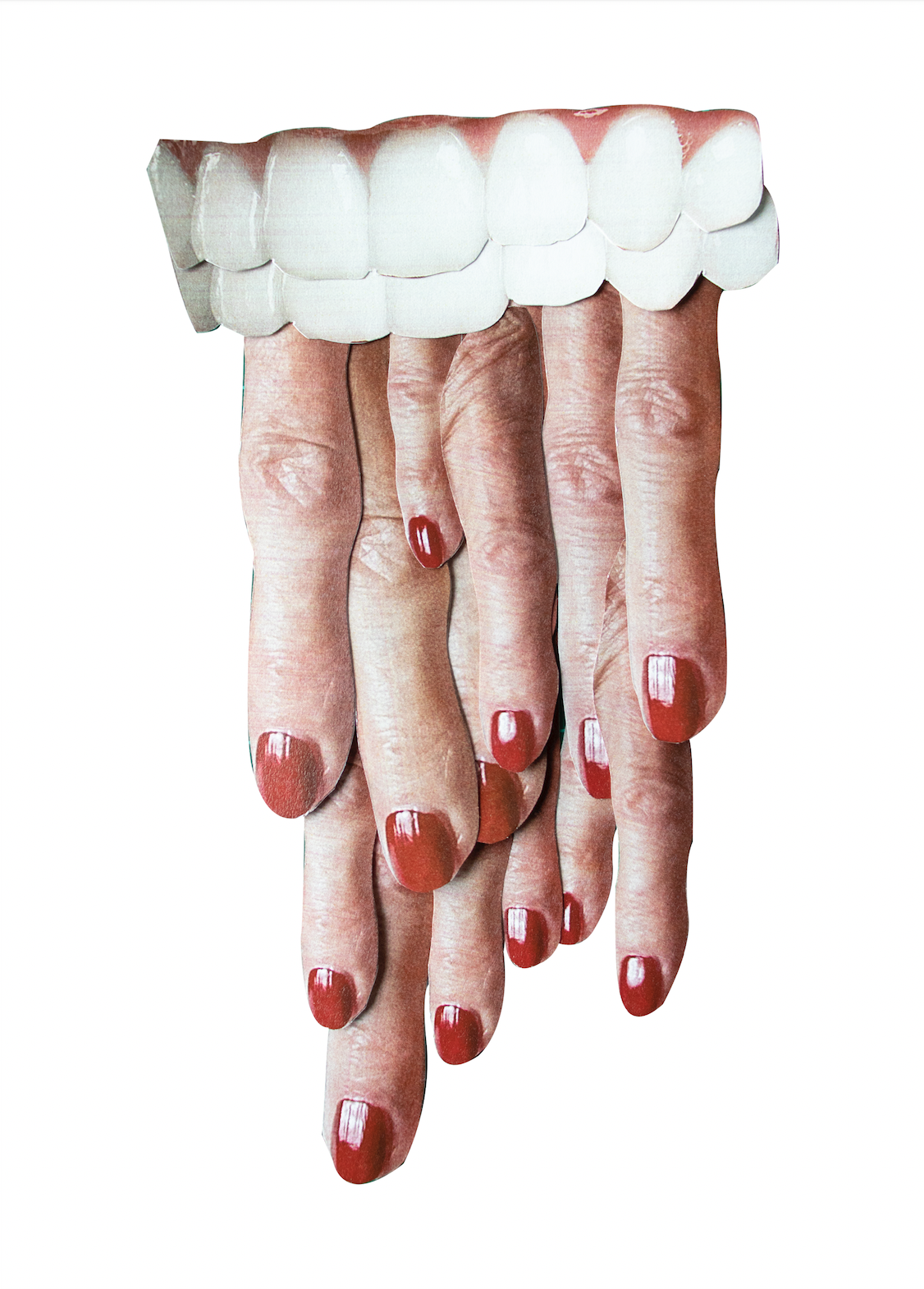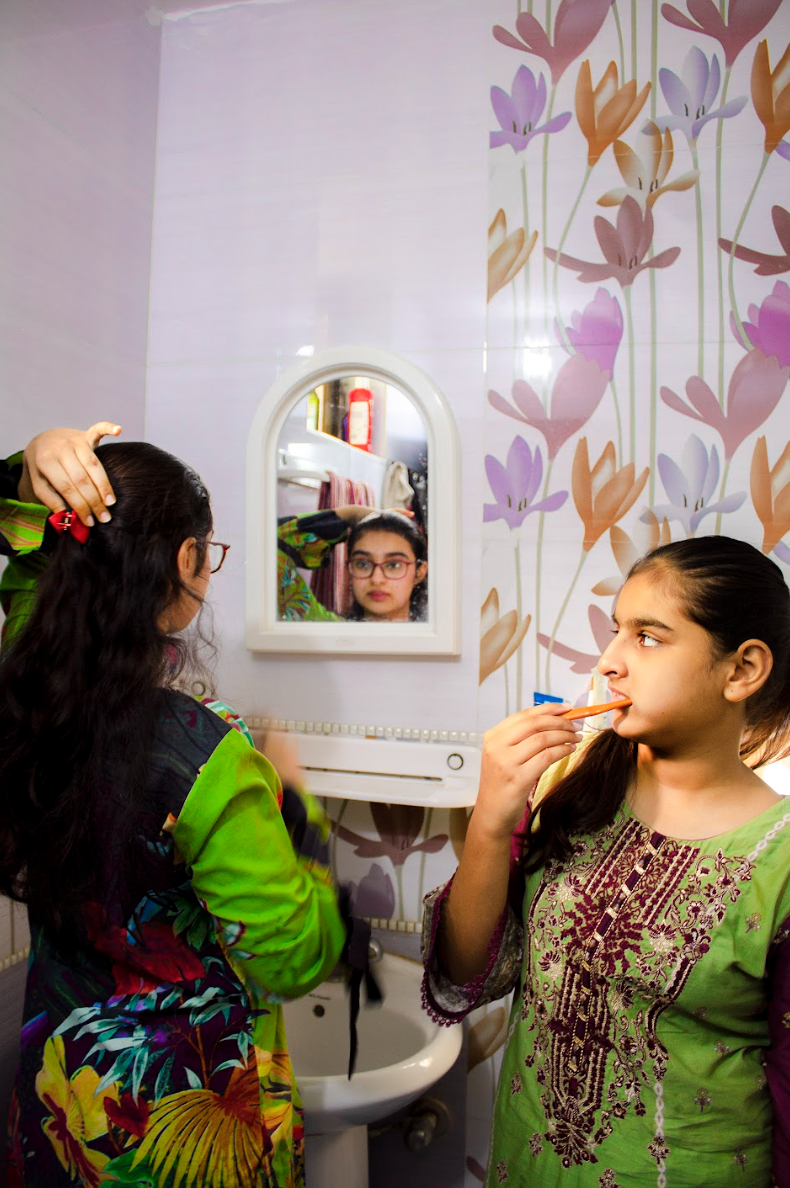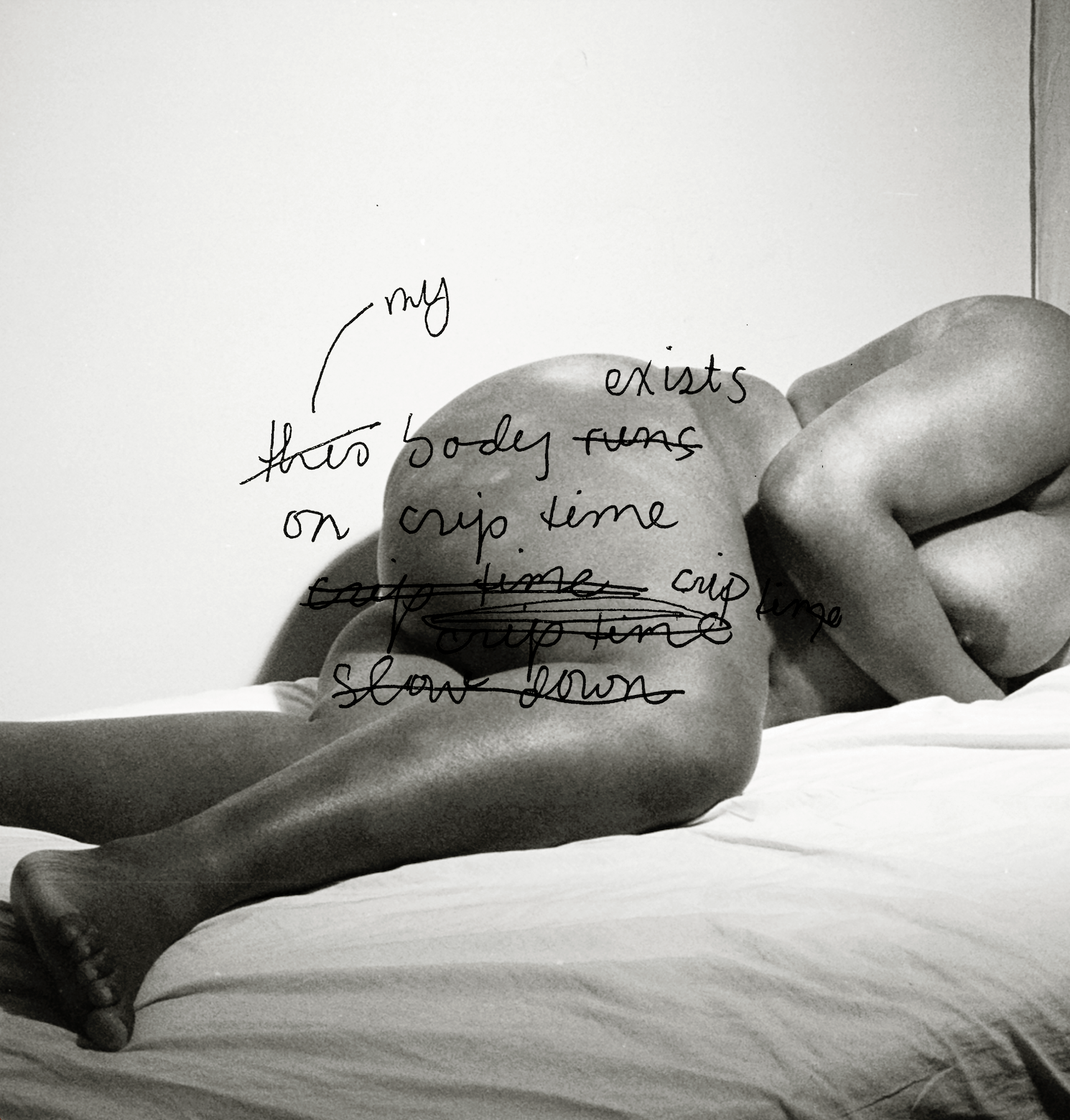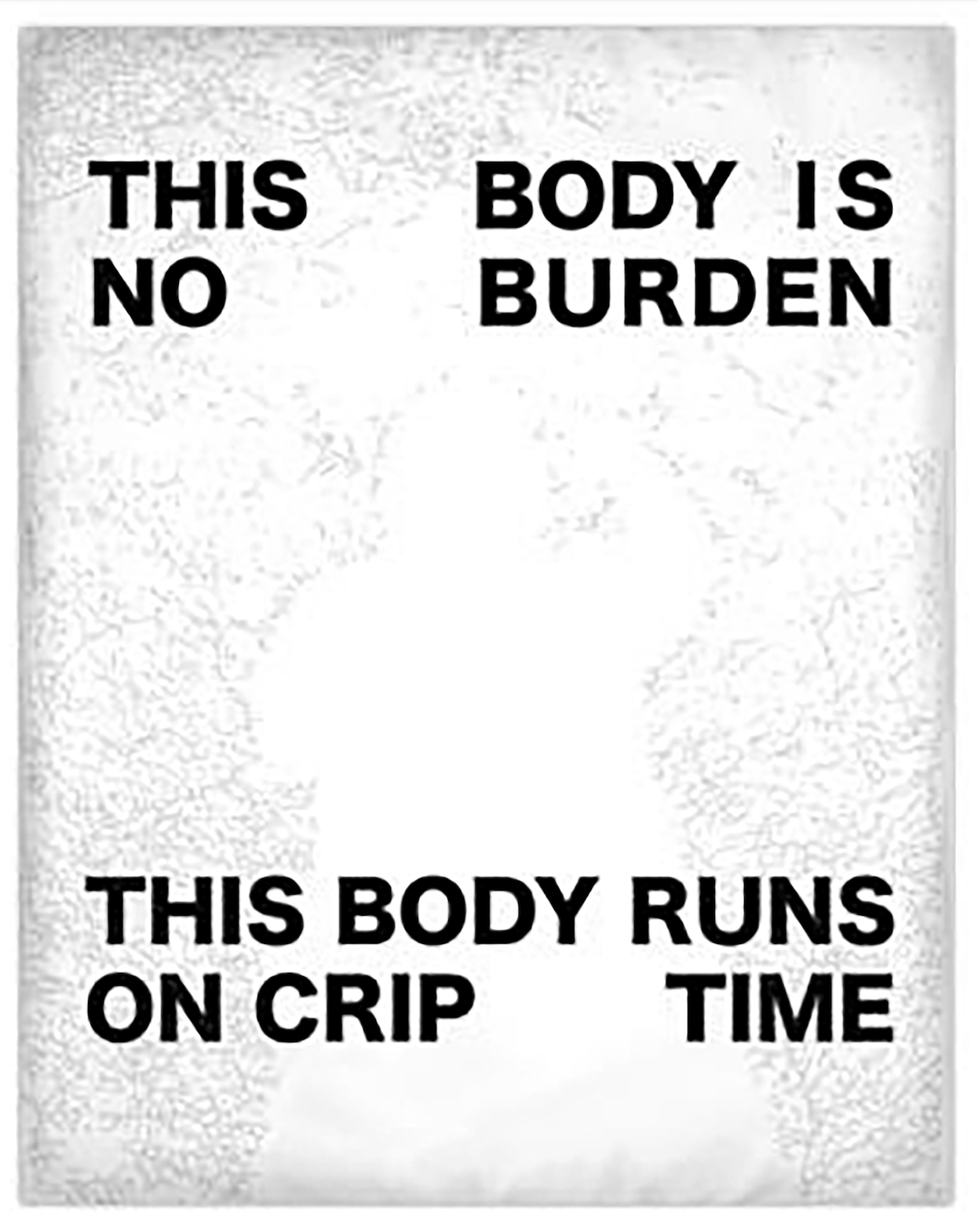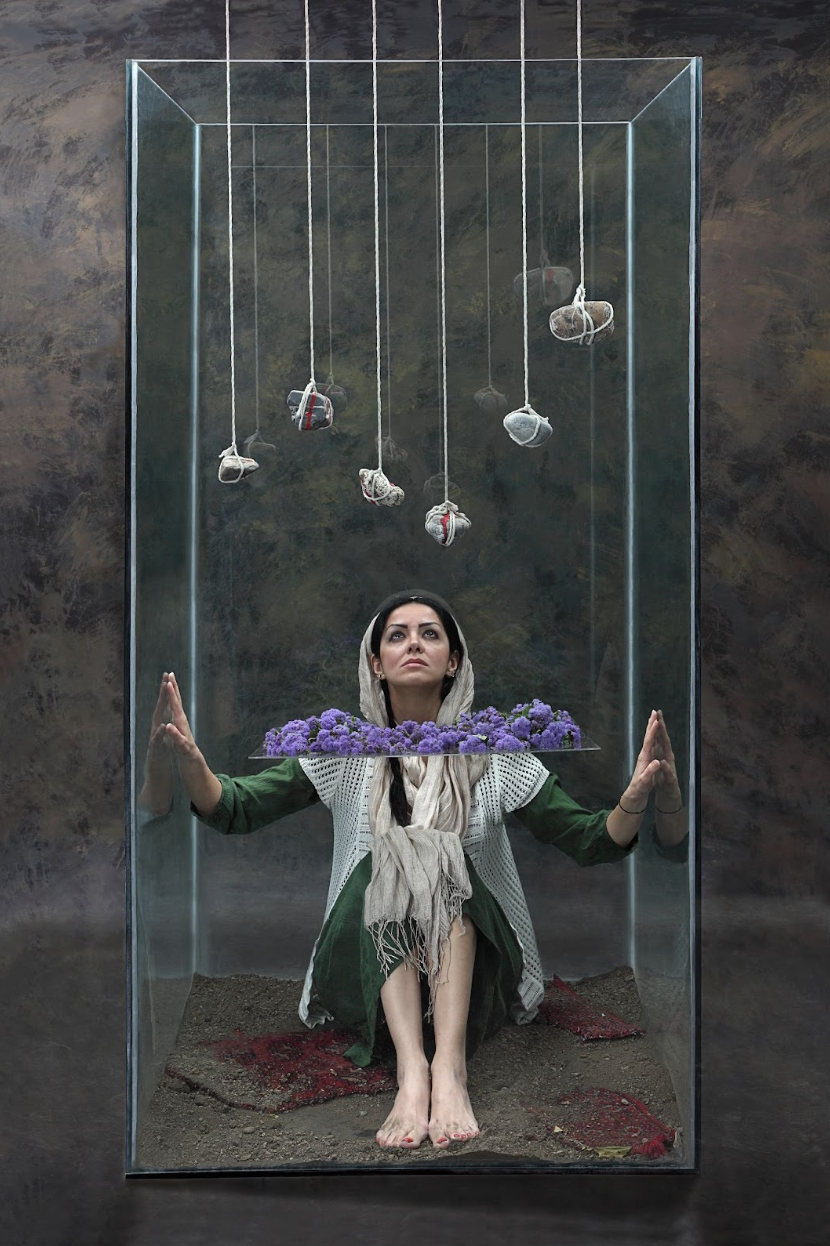Gender & the Lens III brings together artworks created by students and recent graduates from post-secondary photography programs in the GTA. Through the use of lens-based media, these works explore the concept and experience of gender from multiple perspectives. This exhibition is a collaboration between Feminist Photography Network and the Department of Visual Art & Art History at York University.
Read the exhibition text written by Frances Dorenbaum HERE.
My work explores identity, memory, liminality, and the body as an archive. Being born into a Moroccan Judeo-Amazigh immigrant family shaped my interest in movement, migration, time, and space, as well as the transient nature of gestures, which are often embedded in complex artistic, cultural, and personal registers.
This body of work consists of several archive reconstructions of mediated performances. I used a digital camera and keyframed still photographs to mediate and record movement, affects, and phenomenological experiences of embodied listening. The body became a site for documentary activity, oscillating between direct temporal experience and its residual digital inscription. Through this research, digitizing and recording have gradually become my approach to performance. The body of work considers how archiving performance can be viewed as a choreography of affects as well as representations of gestures, movement, and transformative experiences in the temporal tension between the virtual and the real, the corporeal and the technological. Despite its physical presence, the body cannot be seen, and as such, resisting its depiction as a means of objectification and abstracting the body as a means to reach beyond gender representation.
2. YANG CHI
As we live in an environment which constantly conditions us to perceive things from a standard perspective, we often fail to recognize the tendency to observe things from an alternative view point. Project Bubbles utilizes iconography such as Greek and Roman antiquity, neoclassicism, infuses them with a modern attitude to investigate the dependability of our perceptions and the nature of masculinity and perceptions to reality through the contrasts of scales, fashion image history & textile references.
3. WRYNN GESWIN
Wrynn Geswin is a multidisciplinary artist who works primarily with new media and the photographic arts. She was born in Mexico City but carries her practice in Toronto, Ontario. Her works focus on the inconsistencies of the corporate world we inhabit as well as the exploration of gender identity through media.
4. BAHAR KAMALI
Bahar Kamali is a lens-based artist working in photography, video and installation. Their practice is informed by their interest in history, queer philosophy, and cultural theory. They hold a BFA in photography from Toronto Metropolitan University and a BA in Visual Studies from University of Toronto. They currently live and work in Tkaronto.
‘Banovan’ is a photo-based project that examines the role of photography in how we understand and make personal, familial, and collective memories. The project comprises a series of collages paired with images from a popular Iranian women’s magazine from the 1950s and 1960s, titled ‘Ettela’at Banovan’ (translation: Ladies’ Information) also known as Banovan. Originated out of the desire to connect with an inaccessible family history in Iran, the project employs found family snapshots and combines them with the pages of the magazine. By cropping into and isolating the details in clothing and gestures of female subjects pictured in the family photographs and juxtaposing them with the magazine pages, the collages create a collision of meanings where personal and socio-political narratives intersect. The work also addresses the complicated relationship between familial, cultural and political contexts that have influenced women’s lives in Iran.
5. FREIDA WANG
Freida Wang is a Chinese-born Canadian visual artist based in Toronto and Edmonton who works in multidisciplinary visual arts, photography, video and performance. Her work explores concepts of identity—and lack thereof—found in intersectionality and existentialism. Through a merging of the absurd and uncanny, she attempts to depict an understanding of existence from her own perspective as a queer immigrant woman. She draws inspiration from film and movement-based performance, hoping to be able to capture the moments in between that accentuate the impermanent state of being that is existence.
“No, you.” is a series of photographs that explores navigation of the unknown and uncertainties of life through a comedic and absurdist lens. The characters of O and Q represents two sides of the same coin; the duality of how we approach existence with chaos and balance, the characters acting as a conduit for the expression of human curiosity. The text acts congruently and incongruently throughout the series to create an open narrative reflective upon lived experiences of the viewer.
6. SABA SHARIFI
I am an Iranian-born visual artist currently residing in Toronto, ON. As an interdisciplinary artist, my work consists of various mediums such as printmaking, photography, painting, and illustration with a current focus on lens-based media and video art. Through my work, I explore and attempt to depict my personal experiences such as immigration, alienation, and mental illness. I use expressive imagery and fluid lines to create movement and capture humans as patterns, and hollow shapes in order to construct visually striking compositions. Through abstraction and the deconstruction of the human body, I visualize my emotions and the experience of living with body dysmorphia. I am currently exploring my relationship with the community I was raised in and the one I currently reside in through curatorial projects, creating connections between seemingly separate worlds.
A Sight for Sore Eyes is a series of self-portraits created during the pandemic lockdown. Inspired by my distorted self-image and the complicated relationship between women and their bodies. As we look at our own reflection, we often see individual parts of our faces with a tendency to get fixated on features that have been deemed unattractive by unrealistic beauty standards. By abstracting my portraits through a series of experimental collages, I aimed to demonstrate this distorted self-image with expressive imagery, layered portraits, and displaced body parts.
7.DURGA RAJAH
Durga Rajah is interested in the formal and material aspects of photography, and in its potential as an expressive medium. She explores performative strategies which imbricate subjecthood within the photographic process and reevaluates photography’s role in Conceptual Art. Durga is currently pursuing a Masters of Visual Studies at University of Toronto.
Durga Mahishasura Mardini (Invincible Slayer of the Demon Mahish) explores my identity by presenting the myth of the Hindu warrior Goddess Durga, after whom I am named. As an immigrant child growing up in Vancouver, and attending a predominantly Eurocentric elementary school, I was unhappy about having such a foreign sounding name. I would search rotary display racks, naively hoping that my name would be among the many North American names found on keychains and other such items. I was constantly singled out for having a name that was seen as being ‘different,’ ‘beautiful,’ ‘unique,’ or ‘weird.’ I was even confused by my apparent inability to ‘correctly’ pronounce my own name. This work presents the myth of Goddess Durga as an allegory for my personal struggle in coming to terms with the resonance and meaning of my own name.
8. BISMA JAY
Bisma Jay is a queer multi-media artist who has recently graduated from OCAD University with a BFA in Photography. In their work, they seek to create more positive representation of queer and trans BIPOC folks living in the diaspora. In their spare time, they like to make videos for Instagram, design clothes, and take endless self-portraits.
Contagious laughter fills the air, the sound of heavy footsteps darting across the courtyard, and the gossip of the day being recounted as the girls go through their daily chores. The intimate interactions between desi femmes during these moments of escape is something to be admired.
Sisterhood runs deep in South Asia’s family and social dynamic. The daughters of a family look after each other through shared responsibilities while taking care of the rest of the house too.
I photographed my female cousins in Pakistan in various areas around their houses. Areas they frequent. Areas where they get ready, play, work, relax, and more. I wanted to explore the relationship between sisters because I found all of their varying bonds to be so special and unique as someone who grew up away from any extended family. I then further asked them to tell me what having a sister felt like, they all echoed similar responses; saying “no matter the number of arguments they had, their heart would forever cherish the other”. One of them mentioned how it was almost like having the company of your own shadow, you know its always there and you find comfort in how ordinary that is. It was this kind of ordinary everyday intimacy that I wanted to capture. Simple moments of escape with each other in a world that expects so much out of them.
9. CHRISTINA OYAWALE
Christina Oyawale is a Black non-binary disabled lens-based Tkaronto/Toronto artist, curator and designer. They hold a BFA in Photography from Toronto Metropolitan University (formerly X University*). Their artistic focus is documenting radical occupation of space. Oyawale strives for community engagement by creating conversations that pertain to the human condition, growth, rebirth and investigations of self. Their practice includes experimental video, performance, photography and installation. Recent curatorial projects include, As I Live & Breathe at Xpace Cultural Centre and Fixations: Thoughts on Time at Artspace Gallery in conjunction with CONTACT Photography Festival 2022.
In their ideal art world, movement, love, sharing and community interdependence is paramount. These principles are prioritized in their curatorial work and general practice which has been explored. Their human first ethos is a reflection of the disability and queer justice principles championed by the likes of Audre Lorde, Leah Lakshmi Piepzna-Samarasinha, Alice Wong and many more disabled/queer elders and anestors that have come before them.
careworn & coil reveals my personal experiences as a Black, mad and disabled artist; as I undertake documenting my life over the course of a year. By creating a space that replicates the complexities and comfort of living as a spoonie, I work to challenge notions of able-bodied productivity in a day-to-day bedroom setting. The photographs and sculptural aspects task viewers with their perceptions of the human experience by creating an environment that emphasizes the emotional vulnerability of placing private life into the public sphere. The work stresses the importance of "Crip Time", utilizing a particular method of the passage of time that centers disabled bodies rather than the traditional 24hrs clock everyone is familiar with.
10. AZIA JONELLE
Azia Jonelle (b. 1999, Toronto, Ontario) is a second-generation Filipino artist based in Toronto. She recently completed her studies at OCAD University, completing a BFA in Photography. Primarily working as a lens-based artist she often experiments with other disciplines such as textile, sculpture and installation work within her practice. Her artistic practice is informed by placing an emphasis on the intimacy of relationships (ie. platonic, familial, romantic). In more recent projects, she draws on memories of tradition and culture to create connections to her heritage.
Mending ng Angkan
The fragmented memories of cultural traditions consciously create space for the Filipino diaspora, the balikbayan, to connect to those who are far and to those who have come before them.
The terno, a version of the baro’t saya, is a traditional Filipino outfit that now serves as a wearable document for my family. Hidden in the back is careful hand embroidery of four generations of names that ground the fluidity of the fabric, rooting itself to the garment. My grandmother, Lola, my mother, and I, we wear the terno in acknowledgement that we are bound together as custodians of our lineage.
11. MAHSA ALIKHANI
Mahsa Alikhani was born in Tehran in 1981. She completed her formal studies in architecture and photography at Azad University in Tehran, Iran. For the past 10 years, her photography and installations have focused on the social and cultural issues of Iran. Her work is a combination of imaginative and real structures and forms. Mahsa often integrates a degree of irony into her work, engaging elements from contemporary life, culture and art history. She has held solo and group exhibitions in Tehran and various other cities in Europe and North America. She is currently studying and living in Toronto, Canada.
12. KASIA SOSNOWSKI
Kasia Sosnowski (she/her) is an artist from Southern Alberta – her work emphasizes the importance of play and subconscious narratives.
a caress miming the embrace of another body on body.
Two arms stretch out from behind a large clay body. They reach around the form barely able to wrap around at the widest part. Initially the touch is gentle - hands gliding on the wet surface - rubbing up and down. Then slowly the touch becomes more activated - it shifts from gliding, to scratching, to clawing. Evidence of the embrace is carved out of clay - mapping the marks of body on body. As the two hands grasp and paw, new grooves cover older grooves burying them beneath the other.
caress blurs humour, sensuality, and the abject. The gestures performed by Sosnowski echo a school-yard taunt of intimacy and touch, while escalating into a visceral, physical, wet embrace. Sosnowski uses humour as an entry point to discuss difficult or uncomfortable narratives about bodies, sexuality, and shame. This piece questions the boundaries between the two bodies (clay and human): is this one body or two? Are these arms extensions of the clay form? Is it grasping and rubbing itself? caress is the half way point between tenderness and revulsion, play and pain, lust and lewdness.
This exhibition is supported by the Women’s Safety Grant.
View the SAFER SPACES TOOLKIT created by The Centre for Sexual Violence Response, Support and Education at York University.





